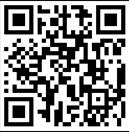Fabric specific introduction
2016-05-11
Fabric is used to make clothing materials. As one of the three elements of clothing, fabric can not only explain the style and characteristics of clothing, but also directly affect the performance of the color of clothing, shape.
Common types
In the world of clothing, the fabric of clothing is multifarious, changing with each passing day. But generally speaking, high-quality, high-grade fabrics, mostly with wearing comfortable, sweat absorbent breathable, Trailer tinggua, noble vision, touch gentle and so on several aspects.
The dress in formal social occasions should choose clothing, cotton, wool, silk, pure pure hemp products. The four kinds of pure natural texture of the production of clothing, mostly high grade. Sometimes, wearing pure leather clothing, is also allowed.
(1) woven fabric (Woven Fabric)
It is also known as woven fabric, warp and weft woven together to form a vertical fabric. The basic organization has TABBY (plain) (twill), twill and satin (satin weave) three. The woven fabric is different by the organization and by the be the most changeful the three basic organization form. Chiffon taffeta, Oxford (Oxford), denim, denim, twill (drill), flannel flannel, satin (Damask) and so on.
(2) knitted fabric (Fabric Knitted)
Knitting needle for the filament yarn or a coil, the coils are on a, due to the coil structure characteristics of knitted fabrics, in the unit length of yarn storage capacity is more. So most good elasticity. The knitted fabric has one side and two sides. The main Jersey (Single Jersey) (velvet), velvet, bird eye fabric (birdeyes), mesh cloth (Mersh fishnet) etc..
Knitted fabrics can be divided into weft knitted fabric (weft-knitted fabric) and warp knitted fabric (warp-knitted fabric) two categories.
Weft knitted fabric is the yarn by weft feeding, the same root yarn sequence bent into a circle and each other on a fabric. The most common sweater for weft knitted fabric.
II the warp knitted fabric coil on direction coincided with the weft instead is a group or several groups of aligned parallel to the yarn, according to a warp feeding, bent into a circle and each other on.
2 fabric difference
Knitted fabric and woven fabric knitted fabric and woven fabric due in knitting in different ways, in the process, fabric structure, fabric characteristics and application of a finished product, have their own unique characteristics, such as some of the more.
(a) the fabric of the organization: (1) knitted fabric: is by order of the yarns bend into the coil and coil on and the formation of fabric and yarn coil forming process can be horizontal or vertical, horizontal braiding known as the weft knitted fabric, while the longitudinal braid called warp knitted fabric.
(2) woven fabrics: is composed of two or more than two groups of mutually perpendicular to the yarn, at an angle of 90 degrees latitude for woven fabric, the longitudinal yarns are called warp and yarn transverse called weft.
(two) the basic unit of the fabric: (1) knitted fabric: the coil is the smallest unit of the knitted fabric, and the coil is made up of a space curve by the loop stem and the extension wire. (2): woven fabric warp and weft yarns between each intersection point called the point, is the minimum unit of woven fabric.
(III) woven fabric characteristics: (1) knitted fabric: because the coil is yarn in a curved space, and each coil were by a single yarn composition, when knitted fabric by the external tension, such as longitudinal tensile, coil bending change, and the height of the coil is also increased, and the width of the coil is reduced, such as tension is transverse tensile, the situation is the opposite, the height and width of the coil under different conditions of tension is obviously can be converted to each other, so the extensibility of the knitted fabric.(2) woven fabrics: because of the warp and weft threads to place some bending, and only in the vertical bending in the direction of the plane of the fabric, the bending degree and between the weft yarn tension, yarn and stiffness, when woven fabrics by the external tension, such as in longitudinal direction tension, increases the tension of warp, bend is reduced, and weft bending increased, such as longitudinal tensile non-stop, until the warp fully extended so far, at the same time the fabric is transverse shrinkage. When the woven fabrics by external tension to transverse tensile, increase weft tension, bend is reduced, and warp bending increased, such as transverse tensile non-stop, until the weft fully extended so far, at the same time the fabric is longitudinal contraction. The conversion does not occur, weft knitted fabric with different.
(four) the characteristics of the fabric: (1) knitted fabric: can extend in all directions, good elasticity, because the knitted fabric is formed by the hole shaped coil, there is a large permeability, soft.
(2) woven fabrics: for woven fabric, the weft, extension and contraction has little to do, also do not change, so that the fabric is generally more compact, very hard.
(five) woven fabric mechanical properties: (1) knitted fabric: fabric physical mechanical properties, including vertical and horizontal dense, dense, square Mick weight, elongation property, elasticity, fracture strength, wear resistance, rolling edge, thickness, raveling, shrinkage, coverage, bulk density.
(2) woven fabrics: woven fabric mechanical properties, including warp and weft yarn density, edge, positive and negative, Shun reverse the direction of hair, fabric coverage.

